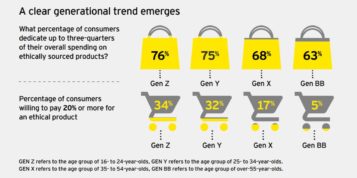Professional bodies and trade associations have a crucial role to play in promoting best practice in their sectors. They help member companies and individuals to become more competitive and achieve their potential, through a range of services and advice. From hosting conferences and networking events, to offering publications, training, educational materials and technical advice; these organisations perform a variety of roles in the working lives of their members.
In a recent survey by Memberwise, over half of membership organisations reported an increase in membership in 2016/17. But while these thriving organisations recognise the importance of digital, user expectations are evolving rapidly and there’s a danger that, without proper digital investment, these organisations could fall behind.
Having worked with a number of professional bodies, we’ve identified key factors for membership organisations to consider when looking to improve the effectiveness of their digital presence.
PERSONALISED MEMBER EXPERIENCES
The first hurdle many membership bodies must overcome is one of value. How do organisations communicate the value of joining? And how do they communicate the ongoing value of subscription months, years and even decades into membership?
One way is to ensure that visitors consistently see content that is relevant to them. Too often membership websites are structured by department rather than by audience, and with the surfeit of content produced by many organisations, content that might be relevant to a user can become lost in the shuffle.
The key is understanding the different user journeys a visitor may take through a membership body’s website. For further personalisation of a website an organisation may use location data, knowledge of special interests, data from previous event attendances, content downloads and more.
DATA INTEGRATION
Another one of the digital challenges facing membership organisations is the inability to effectively measure digital engagement. For these organisations, there’s a need for a toolkit that goes beyond clicks, pageviews and bounces, and looks at how users are really interacting with the site.
What content is being viewed? What’s being shared or downloaded? And which pages drive the most sign-ups? The nature of a membership organisation’s work means that there’s often a great deal of data split across multiple databases and silos. There’s also a risk that by incorrectly storing data, organisations may be in contravention of the Data Protection Act. This can often be the result of legacy CMS, CRM, billing and data capture solutions, due in part to the longevity of many membership bodies. But by integrating an organisation’s data systems into their website an organisation can regain control of its data and use this holistic view of interactions to better serve members.
COMMUNITY MATTERS
Building a community forms a huge part of a membership organisation’s remit. Digital technology can be a powerful tool in bringing your audience together. But with a raft of channels to maintain, and audiences fragmented across them, it can sometimes be a little bewildering for members in search of easy, reliable sources of information.
Last year, Memberwise reported that around 30% of organisations now employ a dedicated person to manage their social media, up 6% on the previous year. But Memberwise warn organisations to be wary of putting all of their eggs in the social basket, noting that messaging on social networks only actually reaches around 10% of members.
This is where, in addition to being a valuable source of information, a website can become a hub of member-driven activity. User submitted content such as blogs, video, and images can give your members a voice in their professional community. Long-term (or ‘elite’) members can share their wisdom through Q&A sessions and live web chats. A robust, flexible digital solution can offer the versatility to host all of these invaluable discussions in one place, rather than scattered across different channels.
SELF-SERVE / SELF-LEARN
Perhaps as a result of growing up in the internet age, Millennial and Gen Z internet users have become accustomed to self-serving through online banking and ecommerce sites. It’s not just an expectation of younger users either; everyone has grown used to the idea that they should be able to update personal information, manage subscriptions and make one-off payments at any time of the day. But modern users don’t just expect to self-serve; they’re also used to self-learning.
Users have grown up Googling new skills, watching YouTube tutorials and reading how-to guides. So while they value the immediacy of a live event, they also desire the flexibility to learn at their own pace. Membership bodies need to run their courses digitally as well as in person, making full use of videos and webinars, and making learning materials; syllabuses, slideshows, lecture notes and more; all available online for members.
As websites become more advanced across the board, users’ expectations rise to meet them. Whatever the industry, there’s no time to stand still when it comes to digital technology, but for a sector as people-focused as membership bodies, it’s especially important that digital solutions are effective in spreading trust and confidence throughout the community and beyond.





